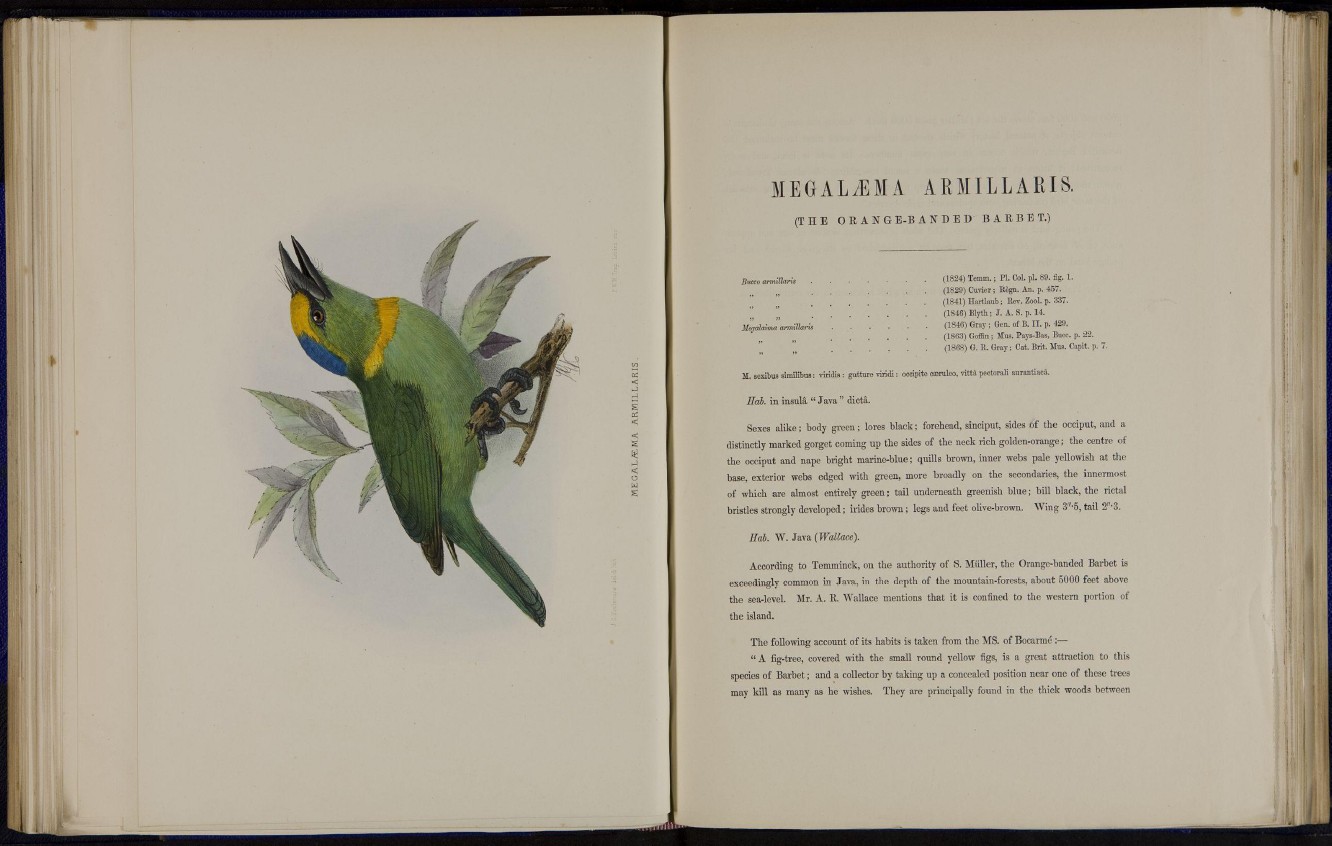
MEGALJ1MA A R M I L L A R I S.
( T H E O R A N G E - B A N D E D B A B B E T.)
(1824) Temm.; PI. Col. pi. 89. fig. 1.
(1829) Cuvier ; Regn. An. p. 457.
(1841) Hartlaub; Rev. Zool. p. 337.
(1846) Myth; J. A. S. p. 14.
(1846) Gray; Gen. of B. I I . p. 429.
(1863) Coffin; Mus. Pays-Bas, Bucc. p. 22.
(1868) G. R. Gray; Cat. Brit. Mus. Cnpit. p. 7.
Megalaima armillaris
M. sexibus similibus: viridis : gutture viridi: occipite casruleo, vittft peetorali aurantiaca.
Hab. in insula " J a v a " dicta.
Sexes a l i k e ; body green; lores black; forehead, sinciput, sides of the occiput, and a
distinctly marked gorget coming up the sides of the neck rich golden-orange; the centre of
the occiput and nape bright marine-blue; quills brown, inner webs pale yellowish at the
base, exterior webs edged with green, more broadly on the secondaries, the innermost
of which are almost entirely green; tail underneath greenish blue; bill black, the rictal
bristles strongly developed; irides brown; legs and feet olive-brown. Wing 3"-5, tail 2"-3.
Hab. W . Java (Wallace).
According to Temminck, on the authority of S. Midler, the Orange-banded Barbet is
exceedingly common in Java, in the depth of the mountain-forests, about 5000 feet above
the sea-level. Mr. A. B. Wallace mentions that it is confined to the western portion of
the island.
The following account of its habits is taken from the MS. of Bocarme :—
" A fig-tree, covered with the small round yellow figs, is a great attraction to this
species of Barbet; and a collector by taking up a concealed position near one of these trees
may kill as many as he wishes. They are principally found in the thick woods between